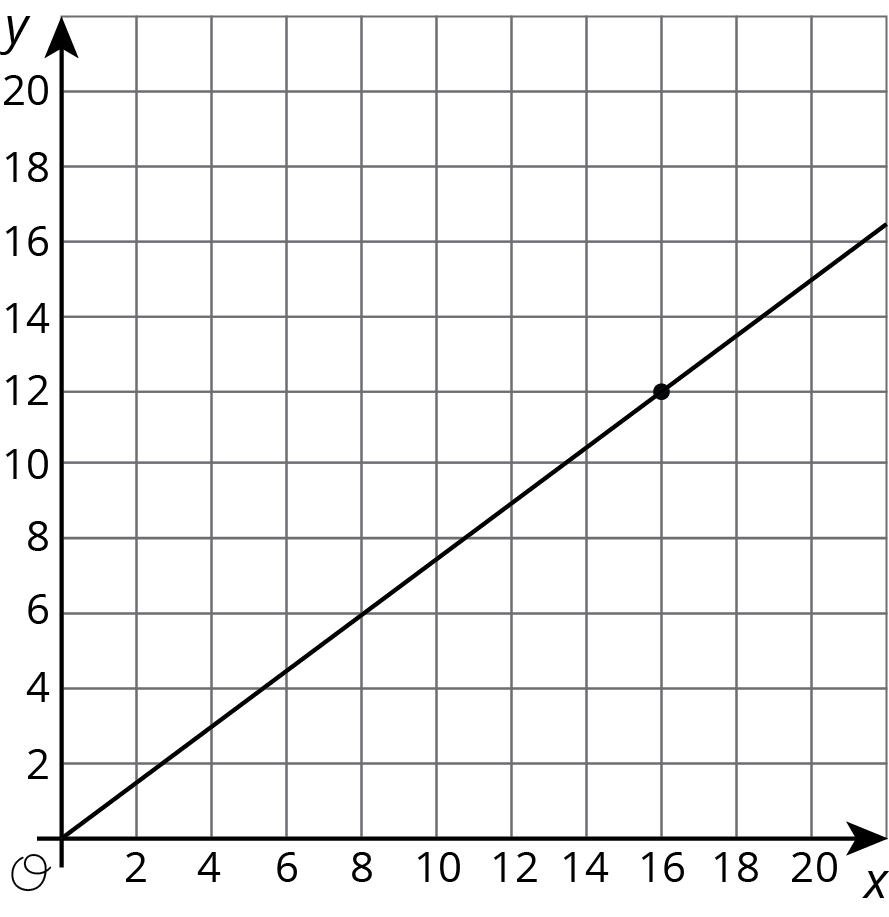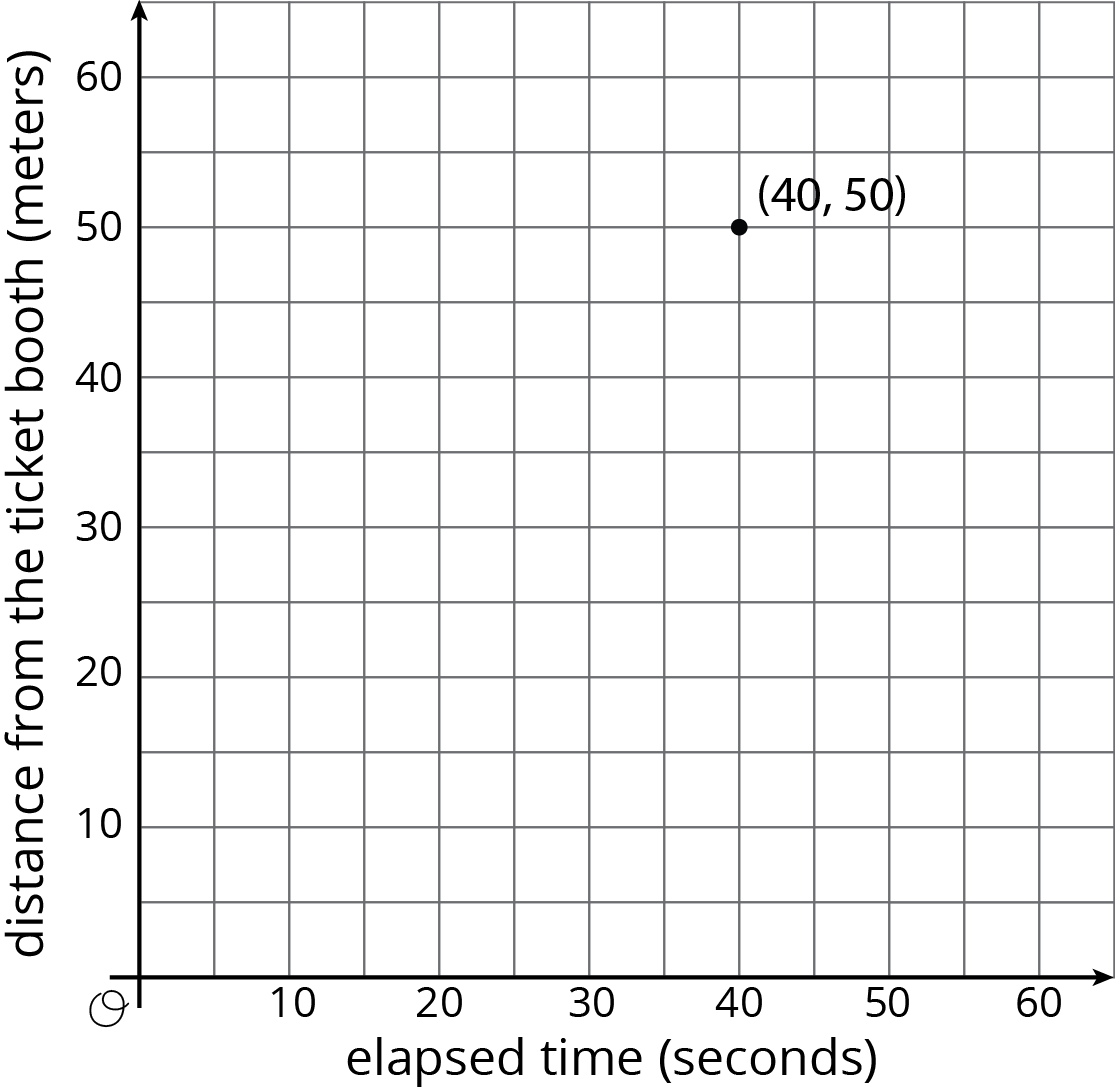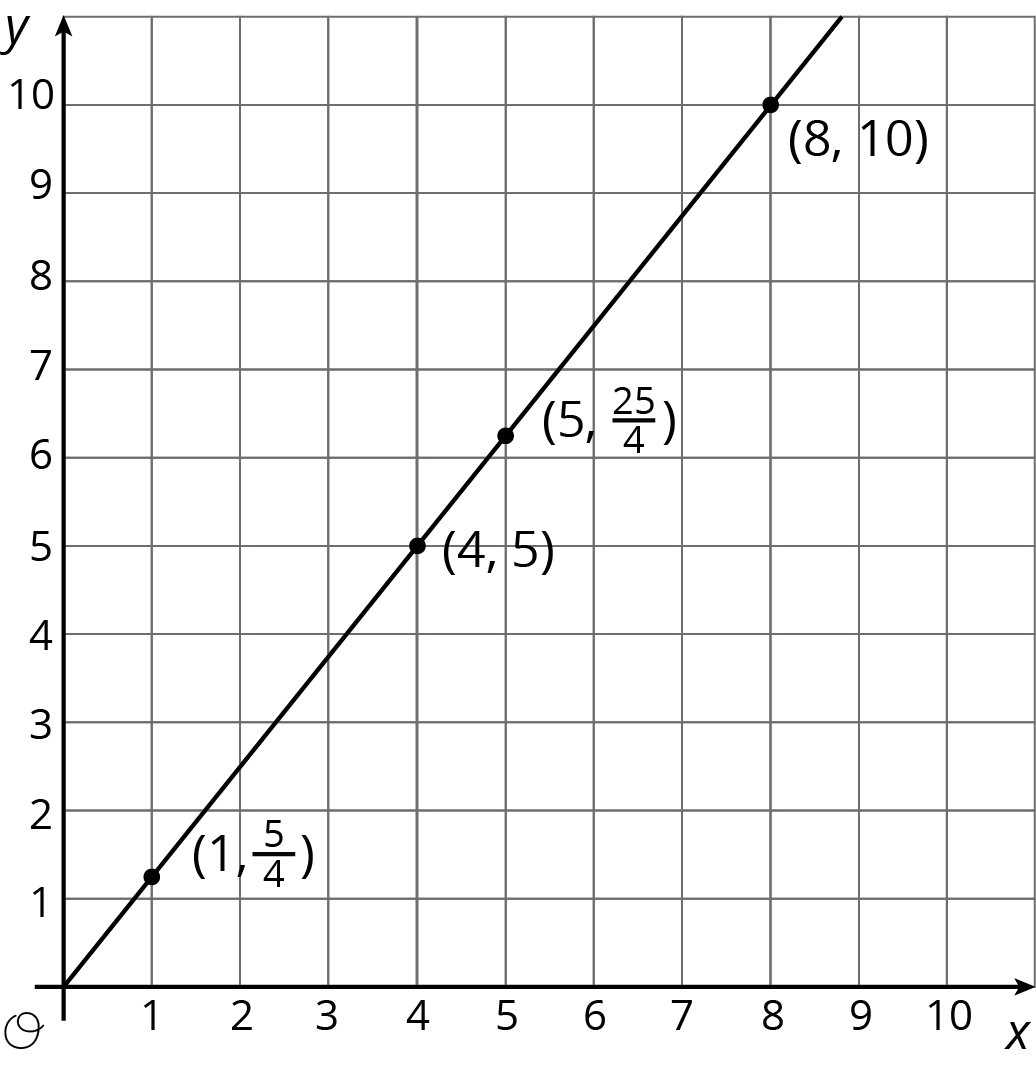For the relationship represented in this table, y is proportional to x. We can see in the table that \frac54 is the constant of proportionality because it’s the y value when x is 1.
The equation y = \frac54 x also represents this relationship.
| |
x |
y |
| row 1 |
4 |
5 |
| row 2 |
5 |
\frac{25}{4} |
| row 3 |
8 |
10 |
| row 4 |
1 |
\frac{5}{4} |
Here is the graph of this relationship.
If y represents the distance in feet that a snail crawls in x minutes, then the point (4, 5) tells us that the snail can crawl 5 feet in 4 minutes.
If y represents the cups of yogurt and x represents the teaspoons of cinnamon in a recipe for fruit dip, then the point (4, 5) tells us that you can mix 4 teaspoons of cinnamon with 5 cups of yogurt to make this fruit dip.
We can find the constant of proportionality by looking at the graph, because \frac54 is the y-coordinate of the point on the graph where the x-coordinate is 1. This could mean the snail is traveling \frac54 feet per minute or that the recipe calls for 1\frac14 cups of yogurt for every teaspoon of cinnamon.
In general, when y is proportional to x, the corresponding constant of proportionality is the y-value when x=1.




